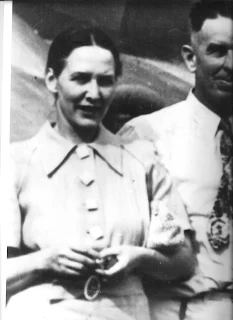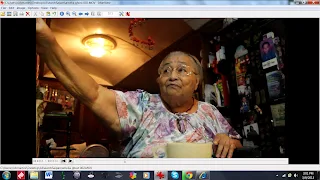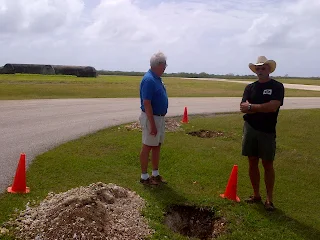MOST of the eyewitness accounts and those of U.S. military personnel are subject to unintentional manipulation, memory reconstruction, and faulty interpretation.
In the wake of the persistent interest to probe the mystery surrounding the disappearance of famous aviatrix Amelia Earhart and her navigator Fred Noonan, Dr. Thomas F. King, Thomas A. Roberts and Joseph A. Cerniglia, in a paper titled “Amelia Earhart, Saipan, and the Reliability of eyewitnesses” examine the hypothesis claiming that Earhart and Noonan were on Saipan based on accounts given by residents and some U.S. military personnel and also how these so-called “eyewitness accounts” could be tainted.
“We want to offer some cautions about uncritical reliance on eyewitness accounts — particularly when these accounts have been gathered by untrained personnel and have been frequently retold,” wrote King, Roberts and Cerniglia.
The three are affiliated with The International Group for Historic Aircraft Recovery or TIGHAR that has been exploring the Nikumaroro hypothesis — that Amelia Earhart and Noonan managed to land on Nikumaroro, formerly Gardner Island, in the Phoenix Islands in the Republic of Kiribati.
King et al. said that there was a flurry of interest in 2012 in stories about Earhart and Noonan on Saipan in the Northern Marianas 75 years after their disappearance while en route to Howland Island from New Guinea in 1937.
They said two new books were published that featured these stories and more are yet to come.
King, a senior archaeologist with TIGHAR, along with Roberts and Cerniglia also submitted a paper last year to the first Marianas History Conference and their paper delved into the eight stories that point to Earhart and Noonan in the Marianas.
In their new paper discussing the reliability of eyewitness accounts, the authors divided these stories into two groups: (1) Micronesian stories, recollections of Chamorro, Carolinian or Marshallese delivered orally and recorded by non-Micronesians; and (2) U.S. military stories, related by U.S. military personnel about what they experienced or by others to whom they spoke.
They said that a few stories come from non-military American sources. They also noted one story from a Japanese informant reported by Mike Campbell in his book.
“The reports that are most impressive to most readers are those of eyewitnesses: people recounting what they say they actually saw, usually in 1937 on the part of the Micronesian informants and 1944 on the part of U.S. military personnel. If these people are not lying — and how could they all be? — then an unbiased reader may reasonably conclude that what they say is true,” said King et al.
The authors cited contradictions in the accounts however.
King et al. said, “A problem that confronts some of the authors who have published material on the Earhart-on-Saipan hypotheses is that eyewitnesses have sometimes provided contradictory testimony.”
They said this problem is often addressed by rejecting some stories and accepting others.
“Acceptance and rejection are often couched in very unambiguous terms,” King et al. said.
They said that informants whose stories are rejected are taken to be Japanese collaborators, participants in a U.S. government cover-up or simply not to be trusted.
“It may well be that all informants were telling what they believed to be the truth, though perhaps shaded in some cases to meet what they understood to be social expectations. However, this does not necessarily mean that any informant described ‘objective’ reality — that is, reality as it might be perceived by another party. There are good reasons to view all the eyewitness and other informant stories with skepticism, even while accepting the honesty and good will of those who have told them,” they said.
As to the reliability of eyewitness accounts, King et al. shared scientific studies that explored reliability of memory, including memories of eyewitnesses.
They cited, among other studies, research undertaken by Elizabeth Loftus of the Univ. of Washington whose 1979 book “Eyewitness Testimony” as the most widely available.
Referencing Loftus, King et al. said, “A growing body of research shows that new, postevent information becomes incorporated into memory, supplementing and altering a person’s recollection. New information can invade us, like a Trojan horse, precisely because we do not detect its influence.”
For the TIGHAR researchers, the studies including Loftus’ tend to show that memory is a highly malleable phenomenon. “Our memories can be significantly transformed by influences from outside our heads— notably by the suggestions of interviewers.”
“Even word choice by a questioner can influence memory,” they said.
These studies, they said, show that people’s memories can change over time in response to external and internal stimuli, and that people can come quite seriously to believe that they recall things that are different from what they originally saw and stored in memory.
“Altered memories can be as vivid, and as firmly and honestly believed in, as ‘pristine’ memories,” they said.
Senior archaeologist King and his fellow researchers said that there is a possibility of false memory creation with respect to both major populations of Earhart-on-Saipan eyewitnesses, referring to veterans of the U.S. military and Micronesian residents.
Explaining further, they found it striking that most memories related to Earhart and Noonan and the Lockheed Electra surfaced a dozen or more years after the 1944 invasion of Saipan.
“Many were not reported until the 1990s, in response to inquiries by Henry Duda, Thomas Devine and others.”
“It is not difficult to imagine a veteran of the invasion, looking back on a very exciting, frightening, confusing, perhaps heroic, perhaps traumatic period in his life, and finding gaps in his memory, things to wonder about,” they said.
They said that reading an appeal like Duda’s, or a book like Fred Goerner’s, Paul Briand’s, Vincent Loomis’, Buddy Brennan’s or Thomas Devine’s, “he may begin sifting and re-sifting his memories.”
They cited a notice published in Leatherneck magazine issued by Henry Duda that stated: “C’mon, Marines. Let’s bring out the truth. During the invasion of Saipan, I, and other Marines, as well as Army and Navy personnel, became aware of considerable material and information that Amelia Earhart, her navigator, Fred Noonan, and their airplane had actually landed on Saipan during her 1937 around-the-world flight, rather than the generally accepted assumption that they had gone down at sea. I wish to contact any additional Marines who may have information, especially those who were on guard duty where her plane was found in a Japanese hangar at Aslito Field.”
For King et al. they didn’t want to criticize Duda’s notice; however, they noted that it was a leading question.
“This sort of questioning pervades the record of eyewitness testimony elicitation on which the Earhart-on-Saipan stories are largely based. To judge from the psychological literature, it would seem almost made to order for the inadvertent creation of false memories,” they said.
They also said that there could be complications with Micronesian people recovering memories of 1937.
They said that there is some evidence that some American servicemen actively sought Earhart as they advanced through the islands.
They said that these servicemen may have asked very leading questions in 1943-1944.
The U.S. servicemen, they said, were encountering Micronesians going through “intense emotional upset.”
They said, “There would surely have been a strong motivation to tell the frightening newcomers what they seemed to want to hear and show them what they seemed to want to use.”
They also did not discount the opportunity for the creation of false memories.
As to the creation of false memories, the researchers also cited an interview made by Fr. Arnold Bendowske with Matilde Fausto Arriola in 1977, which they said was a “textbook case of leading the witness.”
Fr. Bendowske, in interviewing Arriola, said, “I mentioned to the Admiral at that time your name because you saw Amelia Earhart yourself.”
According to the transcript of that interview, Arriola replied, “I did not know her name when I first saw her. She did not mention her name or who she was.
Asked of the year, Arriola was trying to remember and Fr. Bendowske asked her, “Was it 1937 or 1938? Do you recall?”
The Earhart researchers said that Arriola regarded the priest as an authority figure being a Catholic and the priest’s mentioning that the U.S. military wanted her testimony enhanced the seriousness of the investigation.
“Asking leading questions is not the only interviewer practice that may have skewed the testimony of interviewees; the opportunity to profit from the ‘right’ kind of testimony also seems to have existed in some cases,” King, Roberts and Cerniglia noted in their research paper.
The TIGHAR researchers also looked into interrogation across cultural boundaries, implications of group opinion, and intercultural misunderstandings.
For King, Roberts and Cerniglia, “Although there may be kernels of truth in some or many of the stories, there are ways of accounting for them that do not involve the presence of Earhart and/or Noonan in the Marianas.”
They said, “This is not to say that Earhart and Noonan definitely were not captured by the Japanese, imprisoned on Saipan, and/or executed and buried there. Some version of the Earhart-on-Saipan story may be true. The evidence is tainted by the methods (or lack of method) involved in its collection, making it difficult if not impossible to judge its veracity.”
They said the association with Noonan or Earhart should be set aside in considering the stories about an American woman held captive on Saipan; that an effort to identify her and reconstruct her story could result in a valuable contribution to the history of Micronesia during the Japanese period and World War II.





























